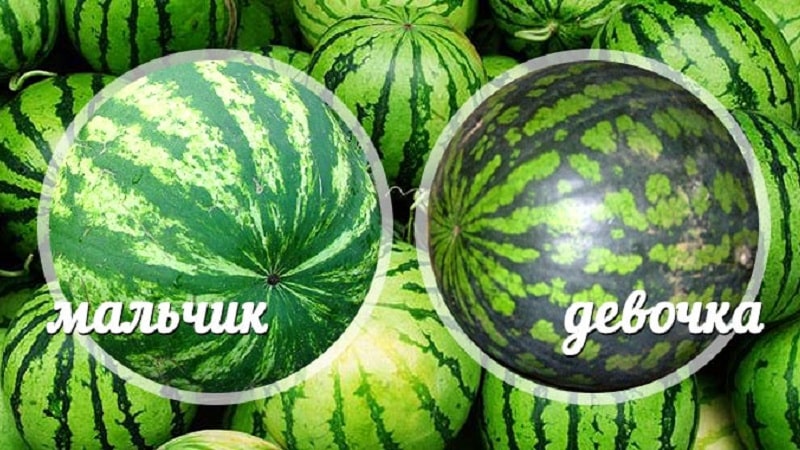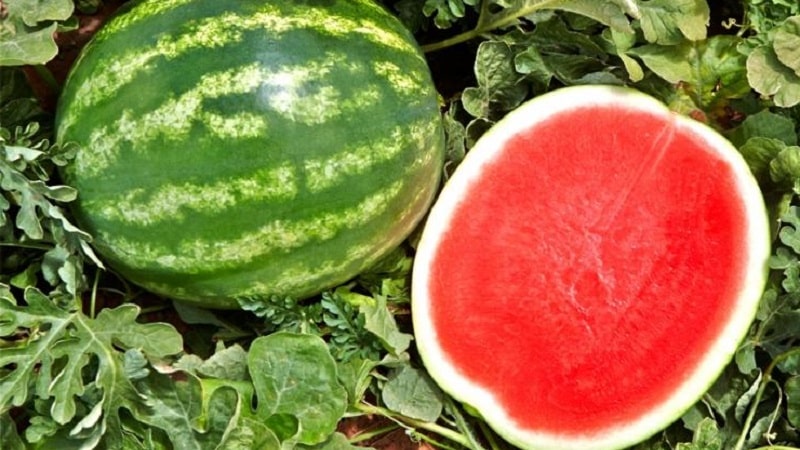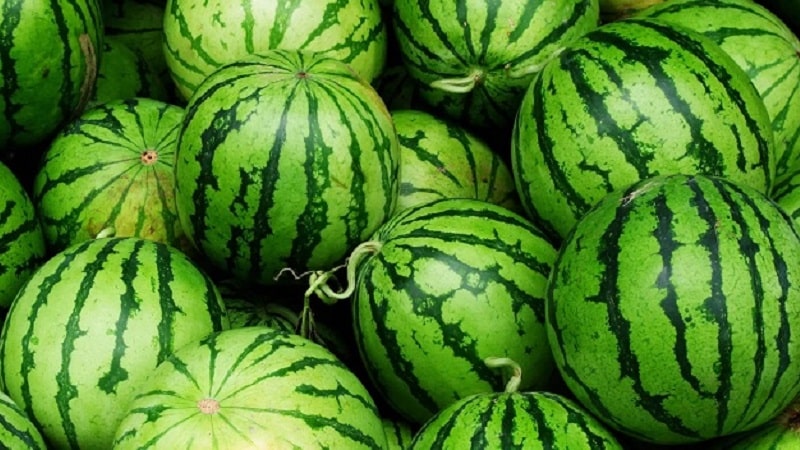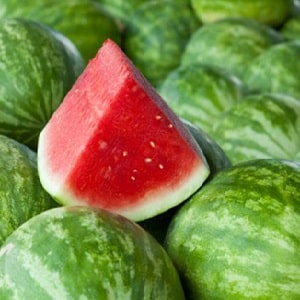How to determine whether a watermelon is a girl or a boy, and choose a sweet, ripe fruit
It's summer, which means that soon the largest, sweetest and juiciest berries - the beloved watermelons - will appear on all shelves.
There are usually many different fruits on the market, differing in variety, size, growing area and even color. And the buyer is faced with a difficult task: how not to make a mistake in all this variety and choose “the same” watermelon - ripe, juicy and without nitrates? We'll figure it out in the article.
How to distinguish a “girl” from a “boy”
In addition to the variety, watermelons also have a gender. This division has absolutely nothing to do with biology and was adopted only to simplify the choice.
How to determine which watermelon in front of you is a “girl” or a “boy”? The difference is that in the "watermelon" the place where the flower once was is flat, with a large brown spot. In the “boy” it is convex and much smaller in size. In size, “male” berries are larger and elongated, “female” ones are smaller and flattened.
For reference. “Girls” are considered sweeter and juicier, they have much fewer seeds. According to statistics, they make up about 20% of the harvest.

Criterias of choice
How do you know that the fruit is ripe? It is important to pay attention to its appearance, time and place of purchase.
Sales time
Watermelons often appear on sale from the end of May. But if you come across a ripe fruit at this time, then with 100% probability it is saturated with chemicals.Manufacturers, trying to make money on seasonal goods, stuff the berries with pesticides, growth stimulants and cut them off without waiting for them to ripen.
Tasty, sweet and most importantly - healthy watermelons hit the shelves only in mid-August. By this time they have time to ripen and be enriched with vitamins.
Place of sale
 There are requirements for the outlet to preserve fruit quality:
There are requirements for the outlet to preserve fruit quality:
- a pallet for storing them at least 20 cm high from the ground;
- the presence of a canopy to protect from direct sunlight;
- distance from the road;
- availability of certificates.
Buying a watermelon near a roadway can result in severe poisoning for the buyer. Harmful substances contained in exhaust gases settle on the berry and enter through the peel. And it’s unlikely that a roadside seller will have all the required certificates, licenses and health records.
Appearance
Its appearance also tells about the taste of the berry.
Tail
There is an opinion that a ripe watermelon must have a dry tail. But if the berry is cut (and this is clearly visible from the stalk), the tail will dry out within three days. That's why when choosing, you should not be guided only by this criterion, otherwise there is a risk of buying a fruit with a dry stalk and green pulp.
It can be useful:
When do watermelons ripen and how to determine their degree of ripeness?
How can you test watermelon for nitrates at home?
What to look for when buying and choosing fruit from the garden
Size
Watermelon size depends on the variety - there are large fruits reaching 20 kg. If you don’t understand the varieties, there is only one piece of advice - take the medium size. When buying a large watermelon, there is a risk of taking a fruit treated with growth stimulants. The little one may turn out to be immature.
Color and structure
The color of the flesh of a ripe watermelon should be pink.. If it is scarlet, it means the berry is overripe, which is also not good, or with a large amount of nitrates.
The structure of the pulp should be granular, and the seeds are black or dark brown. White ones indicate immaturity or the presence of nitrates.

Band Contrast
The stripes on the peel should be clear and bright green.. Any other options indicate immaturity or illness of the fetus. It is believed that the greater the distance between the stripes, the sweeter the berry.
Herself the peel should be hard and glossy. If you scratch it a little, a pleasant smell of fresh grass will appear.
Spot on the side
Since the fruit lay on the ground with one side, then a light spot forms at the point of contact with the soilwhere the sun's rays did not reach. If it is light and large, it means the berry did not last long on the melon patch. In a ripe watermelon, the “cheek”, as this spot is also called, is 5-10 cm in size and has a yellow or orange tint.
No damage
There should be no flaws on the crust: cracks, dents, cuts or rotten areas. Watermelon pulp is an ideal breeding ground for bacteria that enter through defects in the rind. Buying “defective” fruits can cause poisoning or gastrointestinal upset.
Often sellers offer to cut a watermelon and demonstrate its ripeness. This is also not recommended, as the knife may be dirty.
Attention! Do not confuse cracks with “scars” - dry brown cobwebs on the crust. It shows that this is a juicy and ripe berry.

Sound
To determine whether a watermelon is ripe, you can lightly tap it with your fist. The sound should be clear and loud, because the pulp of a ripe berry is more granular, loose and resonates well. An unripe or overripe watermelon will have a dull sound. You can also slowly squeeze the fruit. If you hear a slight crackling sound, feel free to pay for your purchase.
Smell
Unripe fruits have a strong herbaceous odor. Ripe ones have a subtle sweet aroma.
Useful tips
 When buying watermelon, follow these tips:
When buying watermelon, follow these tips:
- Before cutting the berry, pour boiling water over it and wash it thoroughly under running water.
- Do not eat the watermelon right down to the rind - this is where the most nitrates are concentrated.
- Cut berries are not stored for a long time.
- To test the pulp for nitrates, dissolve it in a glass of water. If the water turns bright pink, it means the watermelon is nitrate.
- If the fibers in the pulp have a tinge of yellow, this indicates the presence of chemicals.
- A good ripe fruit should be large, but not heavy.
Read also:
What do white veins mean in a watermelon and what else should you be wary of?
Conclusion
Now you know how to determine whether a watermelon is “female” or “male” in front of you.
Choosing the right watermelon is not such a difficult task. Its taste can be judged by its appearance and smell. The main thing is to buy watermelons from certified retail outlets and choose carefully so as not to be disappointed later.